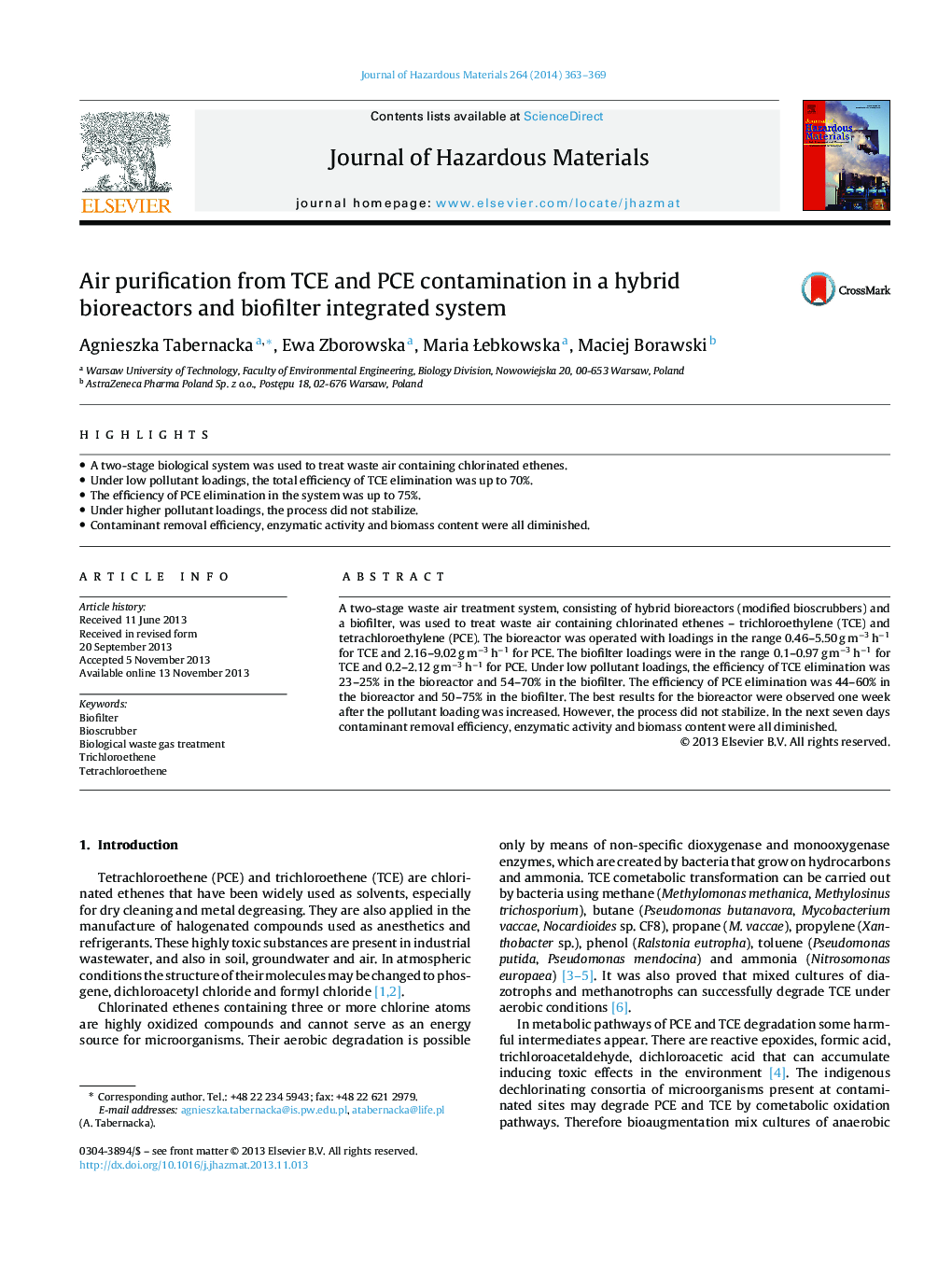| Article ID | Journal | Published Year | Pages | File Type |
|---|---|---|---|---|
| 577043 | Journal of Hazardous Materials | 2014 | 7 Pages |
Abstract
A two-stage waste air treatment system, consisting of hybrid bioreactors (modified bioscrubbers) and a biofilter, was used to treat waste air containing chlorinated ethenes - trichloroethylene (TCE) and tetrachloroethylene (PCE). The bioreactor was operated with loadings in the range 0.46-5.50 g mâ3 hâ1 for TCE and 2.16-9.02 g mâ3 hâ1 for PCE. The biofilter loadings were in the range 0.1-0.97 g mâ3 hâ1 for TCE and 0.2-2.12 g mâ3 hâ1 for PCE. Under low pollutant loadings, the efficiency of TCE elimination was 23-25% in the bioreactor and 54-70% in the biofilter. The efficiency of PCE elimination was 44-60% in the bioreactor and 50-75% in the biofilter. The best results for the bioreactor were observed one week after the pollutant loading was increased. However, the process did not stabilize. In the next seven days contaminant removal efficiency, enzymatic activity and biomass content were all diminished.
Related Topics
Physical Sciences and Engineering
Chemical Engineering
Chemical Health and Safety
Authors
Agnieszka Tabernacka, Ewa Zborowska, Maria Åebkowska, Maciej Borawski,
